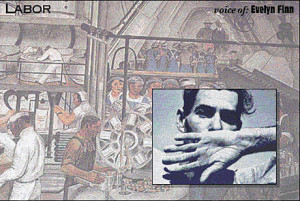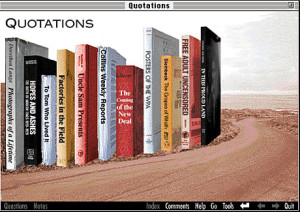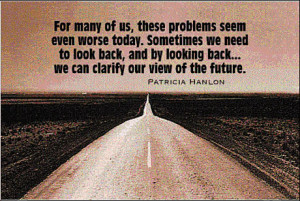Voices of the 30s is a unique CD-ROM. It is an educational database and curriculum for high-school English or History classes about Western expansion, the Depression, and the Dust Bowl in the United States in the 1930s. It is in part, a set of activities, a living database, and a “library in a box.” Voices was originally designed by two high-school teachers by themselves and used in their classrooms for almost five years before being turned into a commercial product. Our goal was to keep the rich content and activities, but reshape the product’s organization and presentation so that others could understand how to use it and so that it met or exceeded the current levels of presentation quality of other interactive multimedia products. It has many features that make it a special tool for classrooms and allow it to “grow” more valuable over time with use by both teachers and students. Both are encouraged to add new materials and commentary throughout the database and there are creation tools that allow students to assemble custom “multimedia book reports” to present to the class, using the materials in the database.
1993
Participants:
Kristina Hooper-Woolsey: Executive Producer
Pat Hanlon: Writing, Research, Content Expertise, Instructional Design
Bob Campbell: Writing, Research, Content Expertise
Abbe Don: Producer, Interaction Design, Production, Programming, Project Management
Nathan Shedroff: Information, Interaction, and Visual Design, Production
James Cottle: Photography, Production
Lisa Paul: Client
The structure of Voices was reorganized to group similar kinds of information together. The tool bar at the bottom of each screen made a clear separation between tools from content. This division is consistent throughout the product. Tools and commentary content are also represented in movable floating windows to distinguish them from the content materials at hand.
The next separation was between the resources in the database and the activities. These were divided by the photograph of the road into groups of billboards that reinforced the idea of taking a journey into the 30s. All topics and resources are accessible directly from the Main Menu.

All text in the interface is active with a built-in embedded searching capability. Users can click on any word and move to any other resource with that word in the same content to support browsing. This allows users to quickly view all photographs, for example, from the same photographer, or all books with the same word in the title. The find feature support more sophisticated searches.
Voices was designed to be used in classes without being the center of the learning experience. Wherever possible, related source material is referenced for books, movies, and other materials not found in Voices. Also, the activities are mostly things to do away from the computer in the classroom and community that link this content and these concepts into the curriculum of the class.
When students add their own materials to the product, it prompts them for the needed information about these materials (such as title, author, and related topics) and builds the necessary links to resources automatically. Voices then adds a large red stamp with the date onto the screen of that resource to distinguish it from the materials that ship with the product.

Students and teachers can make comments about the content at any point within the product. This commentary can be notes to oneself or to others and creates a history of trails that others can later follow.
This procedural information is just as important a research as the material itself and contributes to the feel of a “living database.”

Each screen has an image in the background that is consistent with the section of the product it is in. As long as the background is the same, the students have not moved into another section. The change in background, then, becomes a visual clue to the navigation. These images are consistent with those on the billboards at the beginning of the product.
The text on screen is divided by purpose and arranged in different locations. The descriptive materials (mainly text, but some-times audio, video, or images) is always on the right side while the title, author, source information, and related topic links are always on the right. The typefaces were chosen to reflect those that existed in the 30s and are used both as decoration and navigation. The section, topic, and sub-topic always appear in the upper left corner of the screen in descending order of hierarchy. Clicking on these words allows students to return to the level that the word represents.
The RouteMaker tool allows students to easily create a list of screens to navigate through and create a custom presentation. This sequence can be rearranged, saved, and edited. When finished, students can open the list with the RoutePlayer tool and quickly move through the screens in a presentation to their classes using all of the media and contents within the product as supporting materials.
A final, six minute movie was created to serve as an introduction to the topics with perspectives from people who lived through the 30s and the imagery and materials available within Voices.



Recent Comments